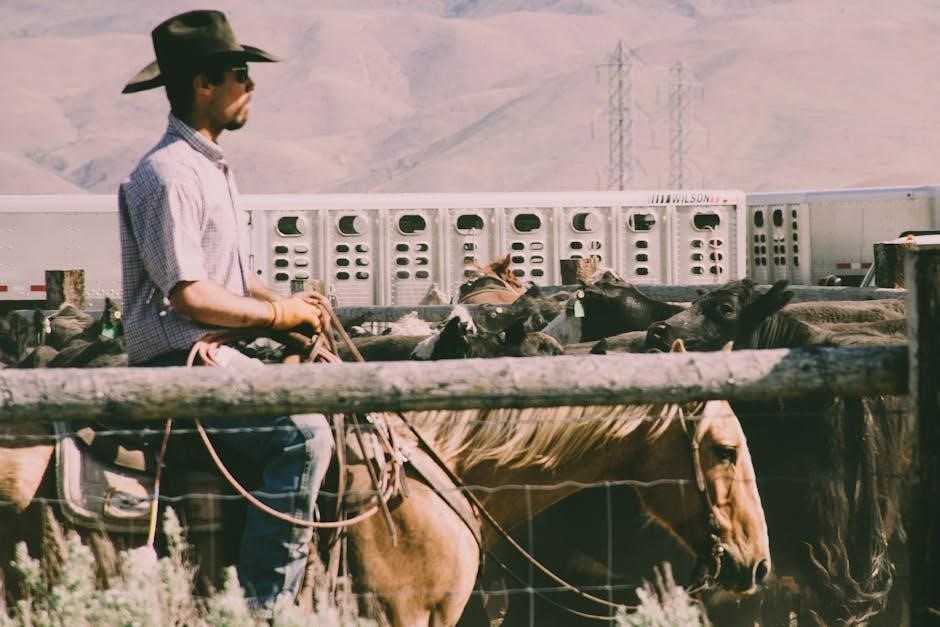
This guide provides essential insights into selecting the right Western saddle size, ensuring optimal comfort and performance for both riders and horses. Proper fit is crucial for a enjoyable riding experience, and understanding size charts and measurements is key to making the best choice. Whether you’re a seasoned rider or a beginner, this guide will help you navigate the process with confidence.
Overview of Western Saddles
Western saddles are designed for comfort and functionality, catering to both riders and horses. They typically feature a sturdy tree, a prominent horn, and a deep seat, providing support during long rides or demanding activities like roping. These saddles are crafted from durable materials, such as leather, and often adorned with decorative elements like tooling or stitching. Available in various styles, including trail, reining, and barrel racing saddles, they suit different riding disciplines. While their primary purpose is practicality, many saddles also showcase artistic craftsmanship. Understanding the design and purpose of Western saddles is essential for selecting the right size and ensuring a harmonious fit for both rider and horse.
Importance of Proper Saddle Size
Proper saddle size is essential for both rider and horse. It ensures comfort, prevents health issues, and enhances performance. A well-fitting saddle allows riders to maintain control and balance, which is crucial for effective communication with the horse. Incorrect sizing can lead to discomfort, pain, or behavior problems in horses, making the riding experience unpleasant and potentially harmful. Choosing the right size ensures optimal comfort and support, leading to a more enjoyable and safe ride. It’s vital to prioritize correct saddle fit to safeguard the well-being of both the rider and the horse.
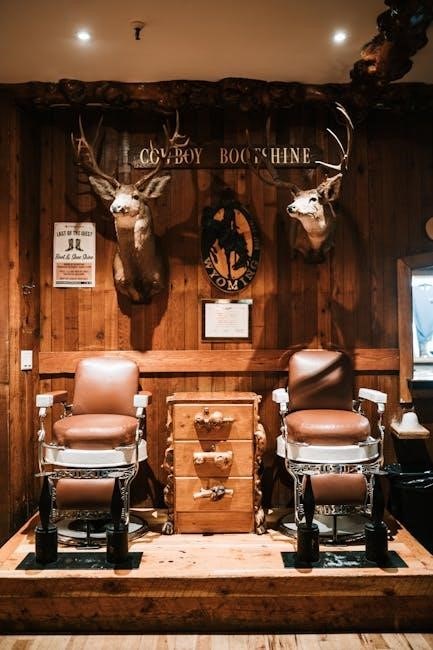
Basics of Western Saddle Sizing
Western saddle sizing focuses on seat size, inseam, and horse fit. Seat sizes range from 12 to 18 inches, accommodating riders of all builds and ages. Proper measurements ensure optimal comfort and performance for both rider and horse.
Understanding Seat Size
Seat size in Western saddles is measured from the back of the swell to the front edge of the seat, typically ranging from 12 to 18 inches. This measurement ensures proper fit for riders of various builds and heights. A 15-inch seat is standard for average adults, while smaller riders may prefer a 14-inch seat and larger riders a 16-inch. Youth saddles are smaller, usually between 12 to 13 inches. Seat size is crucial for comfort and control, as it determines how well the rider sits and moves in the saddle. Correct seat size enhances riding performance and prevents discomfort or fatigue during long rides.
Standard Size Range for Adults and Youth
Western saddle seat sizes are categorized to accommodate riders of different ages and builds. Adults typically range from 14 to 17 inches, with 15 inches being the average size for most riders. Smaller adults may prefer a 14-inch seat, while larger riders often opt for 16 or 17 inches. Youth saddles, designed for children, usually range from 12 to 13 inches. These sizes ensure proper fit and comfort, allowing riders to maintain control and balance. Seat size is determined by the rider’s measurements, not the horse’s size, making it essential to choose a saddle that aligns with individual needs for optimal riding experience.

Measuring the Rider
Measuring the rider involves assessing seat size, inseam, and weight. Use a tape measure from the back of the swell to the front edge of the seat for accurate fit;
How to Measure Rider’s Seat Size
To determine the rider’s seat size, place a tape measure from the back of the saddle’s swell to the front edge of the seat. This measurement ensures proper fit and comfort. Seat sizes typically range from 12 to 18 inches, with youth sizes around 12-13 inches and adult sizes from 14-17 inches. The average adult rider fits a 15-inch seat, while smaller or larger riders may need 14-inch or 16-inch seats, respectively. Accurate measurement is crucial for optimal comfort and performance, ensuring the saddle supports the rider’s thighs without restricting movement. This step is fundamental in selecting the right saddle for both rider and horse.
Measuring the Rider’s Inseam
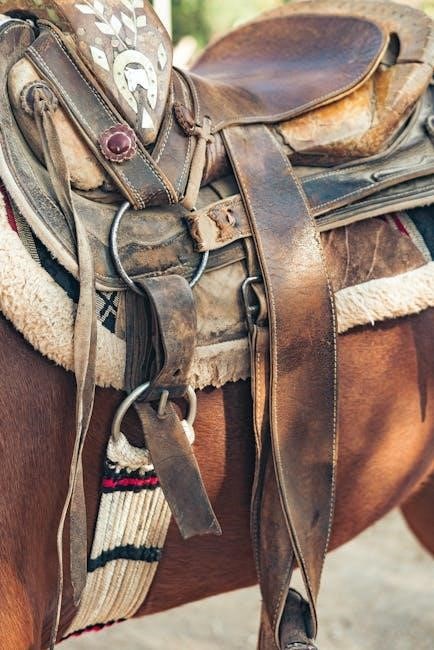
To measure the rider’s inseam, stand straight with feet shoulder-width apart. Place the tape measure at the top of the inner thigh, just below the crotch, and extend it down to the heel of the shoe. This measurement helps determine the appropriate stirrup length and ensures proper leg positioning in the saddle. For children, the inseam should be about 10 inches less than the saddle seat size. For example, if the saddle seat is 15 inches, the rider’s inseam should be around 5 inches. This ensures the stirrups are the correct length for comfort and control while riding. Accurate inseam measurement is essential for a comfortable and secure riding position, especially for growing children or taller riders. Proper fit enhances balance and overall riding performance.
Considering Rider’s Weight and Height
A rider’s weight and height are crucial factors in determining the appropriate saddle size. While height provides a general starting point, weight and body composition play a significant role in ensuring proper fit and comfort. A rider’s weight affects the seat size, as a heavier rider may require a slightly larger saddle for optimal support. Height helps estimate the inseam and stirrup length, ensuring the rider’s legs are positioned correctly. Proper fit is essential for both comfort and performance, as an ill-fitting saddle can lead to discomfort and difficulty controlling the horse. By considering both weight and height, riders can find a saddle that accommodates their body type while maintaining balance and control. This ensures a enjoyable and effective riding experience for both the rider and the horse.
Measuring the Horse
Measuring a horse involves assessing the withers and back length to ensure proper saddle fit. Use a flexible tape measure for accuracy to determine the correct size for comfort and support. The gullet size must accommodate the horse’s withers without causing pressure, ensuring a comfortable and proper fit.
Measuring the Horse’s Withers
To accurately measure a horse’s withers, place a flexible tape measure or a wither gauge across the highest point of the horse’s shoulders, just above the horse’s spine. This area is crucial for determining the proper gullet size of the saddle, ensuring it doesn’t exert pressure on the horse’s spine or withers. The measurement should be taken with the horse standing square and relaxed. The gullet must be wide enough to accommodate the withers without restriction. Proper measurement ensures the saddle sits correctly, avoiding discomfort for the horse and potential long-term health issues. Always use a reliable tool for precise results. Consistent and accurate measurements are key to selecting the right saddle size for both comfort and performance.
Measuring the Horse’s Back Length
To measure the horse’s back length for a Western saddle, begin by identifying the topline of the horse, which runs from the base of the withers to the last rib. Use a flexible measuring tape or a soft rope to gauge the distance along this line. The measurement should be taken while the horse is standing square and relaxed. This length helps determine the appropriate saddle skirt length, ensuring the saddle does not interfere with the horse’s movement or cause discomfort. Proper back length measurement is essential for a well-fitting saddle, as it ensures the saddle sits correctly and allows the horse to move freely without restriction. Accurate measurements are key to selecting the right saddle size for optimal comfort and performance.
Understanding Gullet Size and Horse Fit
The gullet size of a Western saddle refers to the space inside the saddle’s frame, which must accommodate the horse’s spine and withers. Proper gullet size ensures the saddle sits correctly without compressing the horse’s spine, promoting comfort and preventing injury. The gullet should be wide enough to clear the withers by about 2-3 fingers’ width. Measuring the horse’s withers and back length helps determine the appropriate gullet size. A saddle with too narrow a gullet can cause discomfort and restrict movement, while one that’s too wide may not provide sufficient support. Ensuring the right gullet size is critical for optimal horse fit and performance, as it allows for even weight distribution and freedom of motion.
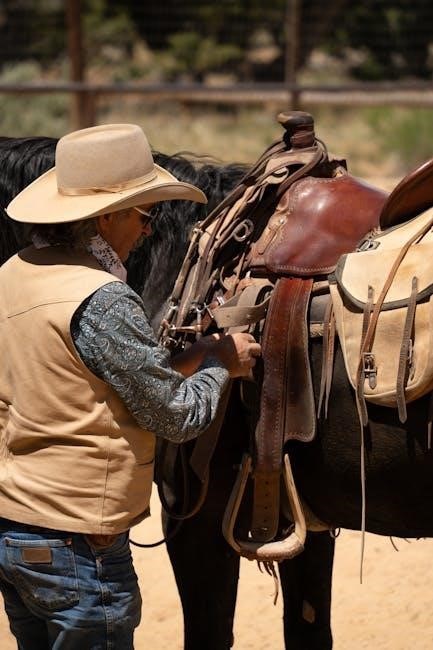
Factors Influencing Saddle Size
Rider’s build, weight, and height, along with horse’s breed, age, and body type, significantly impact saddle size. Discipline and riding style also play a role in selection.
Rider’s Build and Body Type
A rider’s build and body type are critical factors in determining the appropriate saddle size. For instance, a taller or heavier rider may require a larger seat size to ensure comfort and proper support. Conversely, smaller or lighter riders may find a smaller seat size more suitable. The rider’s weight and height should be considered alongside their inseam to achieve the best fit. Additionally, body proportions, such as longer legs or a broader torso, can influence the choice of seat size and saddle style. Ensuring the saddle accommodates the rider’s physique is essential for a comfortable and effective riding experience. Proper fit prevents discomfort and allows for better control and movement while riding.
Riding Style and Discipline
The rider’s style and discipline significantly influence the choice of saddle size and design. For example, trail riders may prefer a more comfortable, cushioned seat for long rides, while barrel racers require a seat that allows for quick, precise movements. Reining and working saddles often feature a deeper seat to support the rider during sharp turns and maneuvers. The discipline also affects the saddle’s overall size, as certain styles require more room for leg movement or specific stirrup placements. Matching the saddle to the rider’s discipline ensures optimal performance and comfort. Whether for casual trail rides or competitive events, the saddle must align with the rider’s needs and the demands of their riding style. This ensures both effectiveness and enjoyment during the ride. Proper fit enhances the overall experience.
Horse’s Breed, Age, and Body Type
The horse’s breed, age, and body type play a significant role in determining the appropriate saddle size. Different breeds, such as Quarter Horses or Thoroughbreds, have varying body structures that require specific saddle fits. Younger horses may need adjustable saddles as they grow, while older horses might benefit from extra cushioning for comfort. The horse’s withers height, back length, and overall build influence the saddle’s gullet size and tree width. A broader or narrower horse may require a custom or specially designed saddle. Ensuring the saddle fits the horse’s unique anatomy is crucial for its comfort and performance. Regular adjustments and professional fittings are recommended to accommodate changes in the horse’s size and shape over time. Proper fit prevents discomfort and promotes a healthy riding experience for the horse.
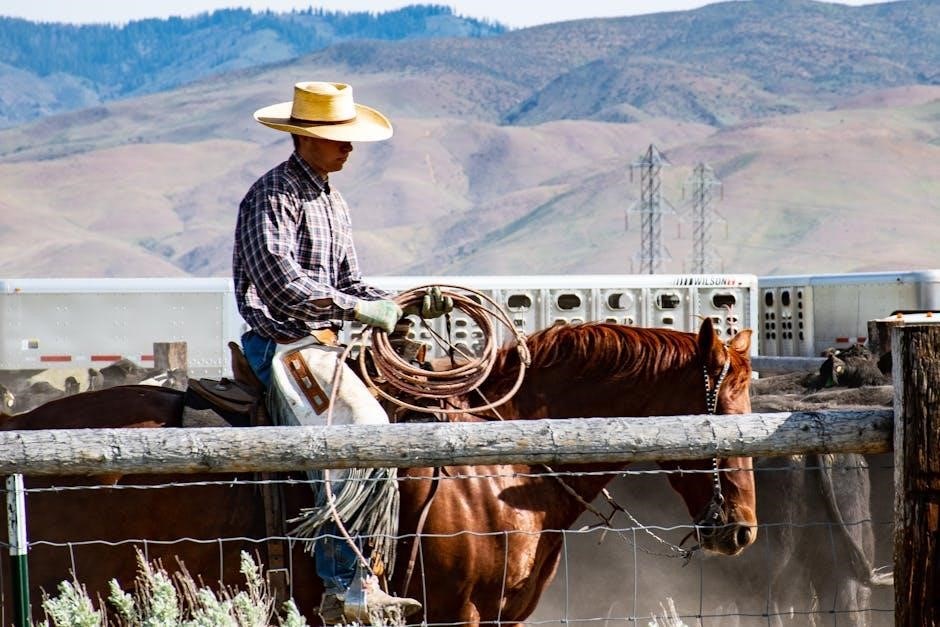
Types of Western Saddles
Western saddles come in various styles, each designed for specific riding purposes. Trail saddles offer comfort for long rides, while reining and barrel racing saddles prioritize agility and precision.
Trail Saddles
Trail saddles are designed for comfort and durability during long rides, making them ideal for endurance and pleasure riding. They typically feature a more substantial design with heavier construction and extra padding to support riders over extended periods. These saddles often include features like reinforced skirts, deep seats, and built-in padding to ensure rider comfort. Trail saddles also provide ample storage options, such as rings and ties, for carrying essentials like water bottles, ropes, and snacks. The materials used are often rugged and weather-resistant to withstand harsh outdoor conditions. When selecting a trail saddle, it’s important to consider the rider’s size, the horse’s back shape, and the specific needs of the ride to ensure optimal fit and performance. Proper sizing ensures both rider and horse remain comfortable and able to enjoy the journey.
Reining and Working Saddles
Reining and working saddles are designed for precision, control, and freedom of movement, catering to specific disciplines like reining and working cow horse. These saddles typically have a more minimalist design, with a flatter seat and less padding to allow the rider closer contact with the horse. They often feature a prominent horn for dallying ropes and a more upright pommel for better leverage. The seat sizes for these saddles generally range from 14 to 16 inches, accommodating riders who need support during sharp turns and quick maneuvers. The lightweight construction and streamlined skirts enable the horse to move freely, making them ideal for high-performance activities. Proper sizing ensures the saddle stays secure while allowing the rider to maintain balance and control during intricate maneuvers.
Barrel Racing Saddles
Barrel racing saddles are lightweight and designed for speed and agility, catering to the specific demands of barrel racing competitions. These saddles feature a minimalistic design with less padding and a smaller pommel, allowing riders to maintain close contact with the horse. The horn is typically more upright for better grip and control during sharp turns. Skirts are shorter to prevent interference with the horse’s flanks during tight maneuvers. Seat sizes for barrel racing saddles generally range from 14 to 15 inches, accommodating riders who need freedom of movement and quick adjustments. The lightweight construction ensures the horse can move freely, while the rider maintains balance and precision. Proper sizing is crucial to ensure optimal performance and comfort during high-speed events.
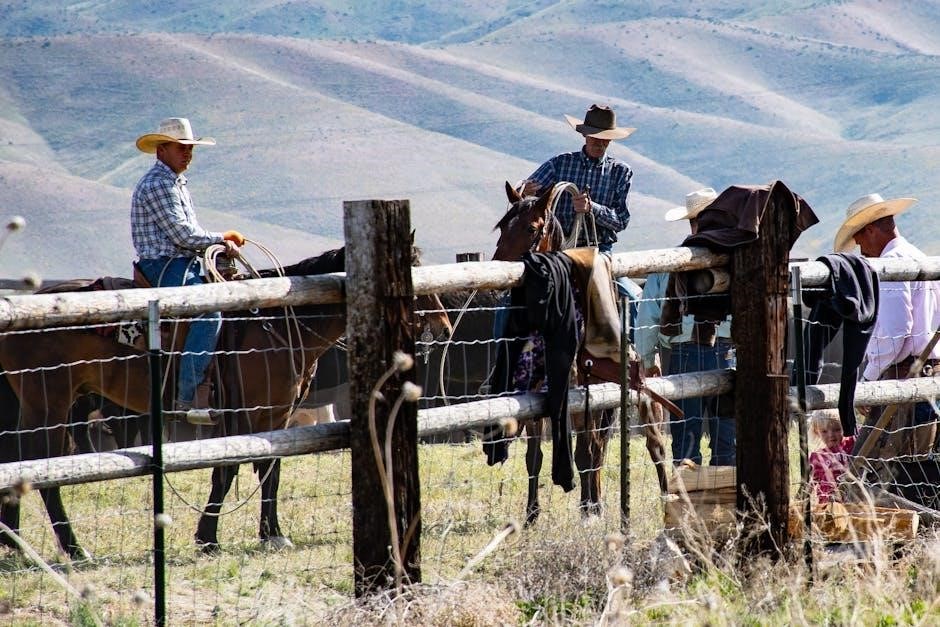
Accessories and Additional Considerations
Essential accessories like stirrups, cinches, and saddle pads enhance comfort and performance. Properly fitting tack ensures optimal horse and rider comfort, while maintaining saddle condition is crucial for longevity.
Stirrup Length and Fit
Stirrup length and fit are crucial for rider comfort and performance. The correct length ensures proper leg position, with a slight bend in the knee. Measure from the bottom of the boot heel to the top of the stirrup. Riders with shorter legs or preferring a more upright position may opt for shorter stirrups, while taller riders or those needing more support often choose longer ones. Adjusting stirrup length affects balance and control, making it essential to tailor fit to individual needs. Proper fit prevents discomfort and enhances riding efficiency, ensuring a harmonious experience for both rider and horse.
Cinches and Girths
Cinches and girths are essential components of a Western saddle setup, ensuring proper fit and stability. A cinch is a wide strap that secures the saddle to the horse, while a girth serves a similar purpose in English saddles. The cinch should be snug but not overly tight, allowing for about two fingers’ width between the cinch and the horse’s ribcage. Proper cinch fit prevents discomfort and ensures even pressure distribution. Selecting the right cinch size depends on the horse’s chest circumference and body type. A well-fitting cinch enhances both rider and horse comfort, promoting a secure and balanced ride. Regularly checking cinch fit is crucial to maintain optimal performance and horse well-being.
Saddle Pads and Blankets
Saddle pads and blankets are crucial for protecting the horse’s back and providing cushioning between the saddle and the horse. They come in various materials, such as wool, foam, and gel, each offering different benefits. A well-fitting pad ensures even pressure distribution, preventing discomfort and potential injury. When choosing a saddle pad, consider the horse’s back shape, the rider’s discipline, and the saddle type. Measure the horse’s back length to select the correct pad size, ensuring it extends beyond the saddle skirts. Proper fit prevents shifting and ensures optimal comfort for the horse. Regularly inspect pads for wear and tear to maintain their effectiveness. A high-quality saddle pad enhances both horse and rider comfort, contributing to a better overall riding experience.
Common Mistakes to Avoid
Common mistakes include choosing a saddle too small or large for the rider, ignoring proper horse fit, and neglecting rider comfort. Avoid these errors for optimal results.
Incorrect Seat Size for Rider
Choosing the wrong seat size is a common mistake that can lead to discomfort and poor performance. A saddle that is too small may cause the rider’s thighs to rub against the swells, restricting movement and causing pain. Conversely, a saddle that is too large can make the rider feel unsecured, affecting balance and control. Proper seat size ensures the rider can sit comfortably with about four inches of space between their body and the swell. Ignoring this can result in a strained riding experience and potentially harm the horse’s comfort. Always measure carefully and consider factors like rider weight and height to avoid this error. Correct fit is essential for both rider and horse well-being.
Poor Fit for the Horse
A poorly fitting saddle can cause significant discomfort and long-term health issues for the horse. If the saddle is too narrow, it may exert pressure on the horse’s withers and back, leading to pain and restricted movement. Conversely, a saddle that is too wide can shift excessively, causing irritation and instability. Proper gullet size is essential to ensure clearance over the withers, while the tree width must match the horse’s back to distribute weight evenly. A ill-fitting saddle can also lead to behavioral issues, such as the horse becoming “cinchy” or exhibiting anxiety when saddled. Regularly checking and adjusting the saddle fit is crucial to maintain the horse’s comfort and prevent potential health problems.
Neglecting Rider Comfort
Neglecting rider comfort can lead to dissatisfaction and fatigue, undermining the overall riding experience. A saddle that doesn’t fit the rider properly can cause discomfort, pain, or even long-term issues like back strain. For instance, a seat size that is too small or too large can make it difficult to maintain balance and proper posture. Additionally, ignoring factors like stirrup length or saddle type can exacerbate discomfort. Riders with specific body types or preferences may find certain saddles unsuitable, leading to frustration. Prioritizing comfort ensures a more enjoyable and effective ride, making it essential to consider both the rider’s needs and the horse’s fit when selecting a saddle. Proper fit is key to maximizing performance and satisfaction for both parties.
Tips for Ensuring Comfort and Fit
Regularly check saddle fit, seek professional fitting, and maintain proper saddle upkeep to ensure optimal comfort and performance for both rider and horse. Prioritize quality materials and design.
Regularly Checking Saddle Fit
Regularly checking the fit of your Western saddle is crucial for both rider comfort and horse well-being. Over time, factors like weight changes, horse muscling, and saddle wear can affect the fit. It is recommended to inspect the saddle every 6-12 months or after significant changes in the rider’s size or the horse’s condition. Look for signs of improper fit such as pressure points, uneven wear, or discomfort in the horse. Adjustments may be needed, and in some cases, a professional saddle fitter should be consulted to ensure the saddle continues to fit correctly and provide the necessary support.
Professional Saddle Fitting
Professional saddle fitting is a specialized service that ensures the saddle fits both the rider and the horse perfectly. Certified saddle fitters use their expertise to evaluate the rider’s build and the horse’s conformation, making precise adjustments for optimal comfort and performance. They assess factors such as seat size, gullet width, and tree shape to match the saddle to the horse’s withers and back length. Regular fittings are especially important for growing horses or riders experiencing physical changes. A well-fitted saddle promotes proper posture, reduces the risk of injury, and enhances the overall riding experience, making it a worthwhile investment for serious equestrians.
Maintenance and Upkeep
Regular maintenance and upkeep are essential to extend the life of a Western saddle and ensure it remains comfortable and functional. Cleaning and conditioning the leather regularly prevents cracking and maintains its durability. Inspecting the saddle’s stitching, hardware, and tree for wear or damage is crucial to prevent structural issues. Proper storage in a dry, cool place away from direct sunlight helps preserve the saddle’s quality. Additionally, using high-quality saddle care products and avoiding harsh chemicals ensures the leather stays supple and resistant to weathering. By committing to consistent upkeep, riders can protect their investment and maintain the saddle’s performance for years to come.
Selecting the right Western saddle size requires careful consideration of rider and horse measurements, riding style, and proper fit. Always prioritize comfort and functionality to ensure an enjoyable experience. Regularly check and maintain your saddle to prolong its lifespan and performance quality. By following these guidelines and seeking professional advice when needed, you can find the perfect saddle that meets your needs and enhances your riding journey. Happy trails!
Proper saddle fit is crucial for both rider comfort and horse well-being. Measure the rider’s seat size and inseam accurately, and consider weight and height for optimal fit. Standard adult sizes range from 14 to 17 inches, while youth sizes are typically 12 to 13 inches. Ensure the saddle fits the horse by measuring the withers, back length, and gullet size. Factors like riding style, horse breed, and rider build also influence size selection. Avoid common mistakes such as incorrect seat size or poor horse fit. Regularly check and maintain the saddle for long-term comfort and performance. Professional fitting and proper care are essential for a perfect match. Always prioritize both rider and horse needs for a enjoyable experience.
Final Tips for Choosing the Right Saddle
When selecting a Western saddle, prioritize proper fit for both rider and horse. Ensure the seat size aligns with your measurements, and the saddle complements your riding style. Always try the saddle before purchasing, if possible, to guarantee comfort and compatibility. Consider the horse’s withers, back length, and gullet size for optimal fit. A well-fitted cinch and stirrups are also essential for balance and control. Don’t overlook the importance of saddle maintenance to extend its lifespan. Regularly inspect and condition the leather, and adjust the fit as the horse’s condition changes. For uncertain riders, consulting a professional saddle fitter can provide personalized recommendations. Ultimately, the right saddle should enhance both rider comfort and horse performance, ensuring a harmonious and enjoyable riding experience.